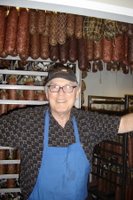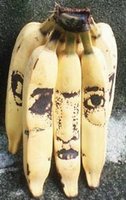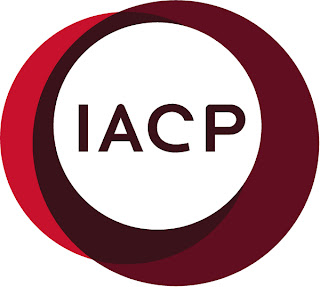 For the past 11 years the Gourmand World Media Awards has offered educational presentations in addition to the recognition of books on cookery, wine and spirits in a multitude of languages.
For the past 11 years the Gourmand World Media Awards has offered educational presentations in addition to the recognition of books on cookery, wine and spirits in a multitude of languages.Attendance to these seminars includes, world acclaimed chefs, authors, journalists, publishers and all gathered together with a common denominator, their passion for food.
Included in the line up of classes was the following:
Design and Food Workshop
The session was held on May 19, 2006, with the partnership of Royal Selangor.
The moderator was Scott Givot, Director on the Board of IACP.
(International Association of Culinary Professionals).
The following speakers presented their view of the role of design in tableware:
- Erika Langerbielke Professor of design at the University of Vaxjo, Sweden
- Alberto Bali, designer, Paris, France
- Birgita Watz, Professor of art and design at the University of Orebro, Sweden
Erika Lagerbielke is a professor of design and specializes in the relationship between wine, the glass and the consumer. Her vision is to create “Design for all the Senses”.
“When we the meet around table, design has to enhance the moment, not make it more complicated.”

The role of design is:
- To identify a problem
- To solve it
- To give practical form as the solution
We can identify two types of wine glasses:
- The social glass, which enables the host to show his personality and identity. Its function is not to showcase the wine.
- The functional glass, which will focus on bringing the wine forward. Today it is recognized that the shape of the glass has an influence on the taste of the wine. Thus, we know that to enhance this taste, one must:
- Bring out the aromas of the wine in the glass
- Lead the aromas to the nose
Nevertheless a wine glass should not modify, rather dress a wine, just as a beautiful woman can be prettier with the appropriate dress. Of course ideally you can have glasses adapted specifically to each type of wine, but this creates financial and logistics problems.
After some tests and studies, Erika believes that you can divide the red wines in two categories, young and mature wines. Thus, she has created two glasses. The first one is more elongated to show the youthful qualities of the wine, the second one is shorter and more ballooned, which improves the nose of more mature wines. She follows the same principle for white wine and thus, has created a more elongated glass for those, which are dry, and more open for those, which are fruity.
Erika has not forgotten the champagne glass, or the glass for sweet wines. The red mature wine glass is suitable for sweet wines since they are also derived from mature grapes. Erika’s most recent creation is two wine glasses without stems for relaxed and informal moments.
Alberto Bali lives in Paris and works as a designer for many great restaurants and food brands.
In his warm speech and friendly style, Alberto Bali shows us his work for the Staub Brand of “Cocottes”, Dutch ovens with an elegant French style and clean design lines. In fact they are a modern interpretation of a design from the 19th century, reflecting the industrial durability and strength, while its form follows sheer functionality and clearly displays its brand.
This “cocotte” (Dutch oven) is offered in many colours, and may be used for various purposes. The smallest is to serve caviar!
Woks and other kitchen utensils make the rest of the Staub product line, with its signature golden button on top. There is even a large pan with two handles, which is specifically designed for ease in cooking and simple to pour without burning oneself.
Another design by Alberto Bali is the new bottle for “Saint Geron” mineral water. The challenge was to create a square shaped bottle, which transformed into a round neck. The result is a vessel both elegant and revealing futuristic lines. An advertisement shows a giant bottle in the midst of a Manhattan landscape, towering in the middle of and above giant buildings.
Birgita Watz, Professor of art and design at the University of Orebro in Sweden, specializes in the art and design in association with the meal.
Design is defined on three planes:
0. Service
0. Know How
0. Art
0.
Art implies genius and taste. Taste includes quality, elegance, style, refinement and culture.
Let us take the example of a Champagne glass. One will find:
0. The disorder of bubbles
0. The order and symmetry of the glass
0. Between them, the agreeable chaos of the spirit, caused by alcohol.
Thus, champagne symbolized the fact that chaos alone leads to nothing. Also we learn that order alone is not interesting, and that only both order and chaos together are interesting. This association creates equilibrium.
In nature, even among the most ancient fossils, you will find this equilibrium, which is symbolized by the golden number 1,618.
How do you make people aware of this equilibrium? As a professor of design, the idea may be to ask pupils to do one drawing each morning, and for the teacher to do one, to express this equilibrium.
There is always something in the air. When we talk about “the atmosphere”, this is what we imply in a conscious way. It is important to develop the capacity of the mind to understand what is in the air. It is this capacity that allows us to communicate. Culinary art is nothing else.
It is also interesting to work on a specific theme, such as colour. It is surprising to see that students who organize one complete meal around a given colour will develop treasures of the imagination and their own creativity in order to find equilibrium around this colour.
Various studies on this matter have shown that the association of white with colours recognized, as “cold” will compliment one another, for white will give energy to these colours. Similarly, black gives energy to colours known as “warm”.
Only blue is a problem in the kitchen. A test has offered the same food on plates of different colours. The blue plate is much less often chosen than the others, nearly never in winter, and seldom in summer.
We must be pragmatic, stylish, and poetic.
These three traits allow us to apprehend design in the culinary arts and give us a proper framework for: creating esthetics in practical service, bringing cookery to its highest level and giving a new dimension to the moment that the meal is experienced.



















